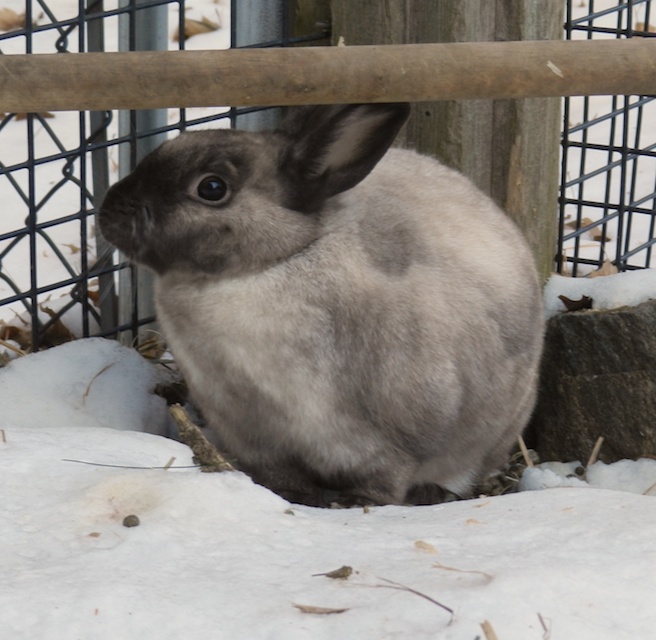It was 17 degrees F this morning when I went outside to do the barn chores. That’s cold. And yet, the hens happily foraged around on the snowy crust. Even Twiggy, with her big floppy red comb, showed no sign of minding the chill – or of frostbite. It takes more than cold temps to cause frostbite.
On frigid days like this, the hens spend most of their time indoors. My coops aren’t insulated. They’re not heated. But, the girls are comfortable. I can tell because of their behavior. Notice how they’re evenly spread apart and active. (For those of you wondering where Buffy is during the day, there she is in her favorite corner, which is just out of HenCam viewing range.)
You don’t need a tight, cozy coop to keep your flock comfortable in cold weather. The Big Barn is spacious and airy. The goat’s stall door is open, so there’s cold air moving through it. And yet, look at how at ease the Gems are. They’re preening and scratching for tidbits in the bedding.
What does matter is that the air is dry. One way to judge air quality is by looking at the windows. The Big Barn windows are clear of frost.
Despite the cupola and vents, the Little Barn holds more moisture in the air. I know this because I see ice crystals on the windowpanes.
The humidity comes from both respiration and manure. It’s the combination of wet and severe cold that causes frostbite, and humid air can also lead to respiratory disease. I’m careful to manage it. Although there’s little smell in the winter, and the poop is frozen, I muck out more frequently to keep the coop as dry as possible. I can still see out of those windows, so I know that I have it under control.
We’re expecting a major snowstorm tomorrow night, so this morning I’ve cleaned the coops and topped off the feeders and waterers. I’ll keep the pop-doors closed while the snow is blowing. After the storm passes, I’ll shovel out the run so they can get back outside (hens won’t walk in deep snow.) What I won’t do is worry if they’re warm enough. They’re dry. They’re clean. They’re out of the wind. 17 degrees is nothing to them.
Meanwhile, Phoebe says, Bring on the snow!
For more about cold weather care for hens, see my FAQ.
If this post has been helpful to you, please consider sharing it. There are icons for sharing on the bottom right. I have a goal to increase readership of this blog and I need your help. Thanks!















